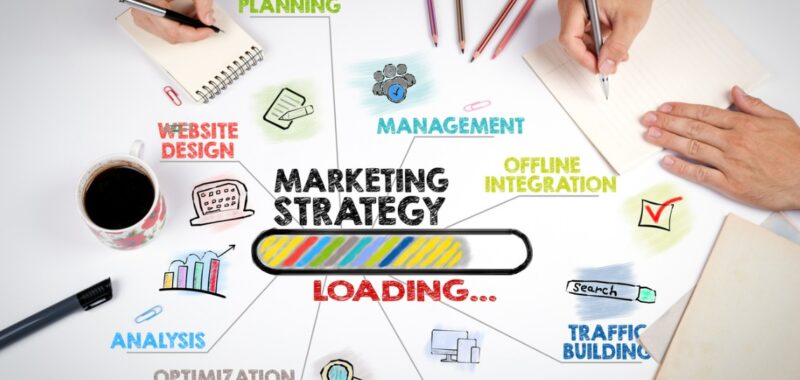In this month’s podcast episode of “Estate of Mind,” hosts Tami Simms and Jack Miller welcomed special guest Will Hayes, the Senior Growth Strategist and Head of Paid Media at the Toby Agency, the Institute’s go-to expert on digital marketing, to discuss strategic marketing. We delve into the intricacies and practical aspects of strategic digital marketing, while highlighting key applications.
Here is an overview of some of the key topics discussed:
Strategic marketing with the SMART Goal framework
One of the foundational frameworks in marketing is the “Objective First Framework.” This approach emphasizes understanding your ultimate goal before diving into tactics, strategies and execution plans. At the core of this framework is the creation of SMART goals—Specific, Measurable, Actionable, Realistic and Timely objectives that guide your efforts and ensure a focused and effective marketing strategy.
The importance of realism
When setting goals, realism is crucial. While everyone aims for a flood of leads or the highest possible numbers, it’s essential to consider the costs and conversion rates involved. For instance, if the average conversion rate is 10%, you need 10 visitors to your website to generate one lead. If acquiring a visitor costs $50, the expenses add up quickly, highlighting the importance of setting realistic expectations.
Starting with the ultimate goal
Before launching any marketing campaign, ask yourself:
- What is my ultimate goal?
- How will I measure my performance?
- Who is my target audience?
Write down your answers and be as specific as possible. This clarity will help you tailor your strategies and tactics to achieve your objectives effectively.
Business needs vs. marketing needs
It’s essential to distinguish between business needs and marketing needs. Business needs might focus on long-term goals like brand exposure and customer engagement, aiming to build familiarity and trust. Marketing needs, on the other hand, often target shorter-term objectives, such as generating immediate leads or sales.
The funnel approach
Using the funnel approach in digital marketing starts with broad brand awareness at the top and narrows down to specific lead generation tactics. At the top of the funnel, the focus is on driving awareness and building the brand through high-engagement content on social media, such as videos and articles. In the middle of the funnel, potential customers are engaged further by providing valuable content that addresses their needs or interests, like home value calculators or renovation tips. At the bottom of the funnel, the goal is to convert engaged prospects into leads or customers by encouraging them to take specific actions, such as signing up for a consultation or requesting more information.
Build your brand
To build a strong brand, you need a clear and distinctive point of view, best expressed through your personality. Consistency on social media leads to success as people become more comfortable and authentic over time. Authentic engagement resonates with audiences, driving recognition and engagement. Ultimately, this helps establish you as a trusted expert or luxury leader, aiding in achieving your goal of selling homes.
Print vs. digital
While digital marketing offers precise targeting and measurable results, print media still has value, especially in the luxury space. High-quality print materials can create a strong brand presence and reach audiences in a tactile and impactful way. The key is to integrate print and digital strategies effectively, ensuring multiple touchpoints with potential customers.
Digital is more than social media
Digital marketing extends beyond social media to include behavior image-driven and keyword copy-driven strategies. To adapt to a more strategic marketing style, agents should aim to dominate local search map sections as a gateway for potential customers.
Google is shifting its focus to favor local services in search results, recognizing that national brands, despite their SEO dominance, don’t always provide the highest quality user experience. This shift is driven by active engagement with Google My Business profiles, customer reviews and messages, rather than just content.
QR codes have made a significant comeback, offering a seamless way to bridge print and digital media, providing an interactive experience without cluttering high-end print materials and enhancing engagement without compromising the aesthetic appeal of the print material.
Conclusion
By starting with a clear objective and creating SMART goals, you can develop focused and effective strategies. Balance business needs with marketing tactics, leverage both print and digital media and use tools like QR codes thoughtfully. These strategies will help achieve measurable success and build a strong brand presence.
We encourage you to listen to the full podcast to gain more insights on how to implement an effective digital marketing campaign.
Stay ahead with the institute
For more guidance on growing your luxury real estate practice and developing your skills when working with the affluent, learn more about The Institute’s Training Options. Becoming a member of The Institute is a valuable investment in your future success as a luxury real estate professional. Access curated real estate tools and resources, advanced learning experiences and connect with a network of successful real estate professionals throughout the United States and Canada.
Our Certified Luxury Home Marketing Specialist™ (CLHMS™) designation is recognized globally. Take advantage of the training offered and the information provided through The Institute’s Local Luxury Market Reports, published monthly, exclusively for members.
View additional insights from the Institute.

